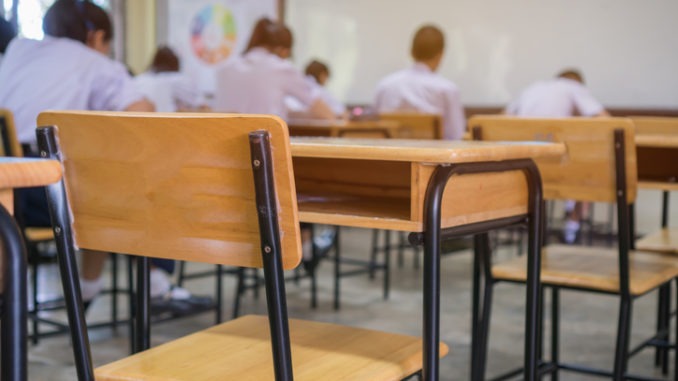
As reported by BBC news, as children across England prepare to return to school, the focus is on testing, masks and the familiar routines of social distancing and hand washing
But on top of all those measures, there’s something that until recently hasn’t had much attention: a good supply of fresh air. Air matters because if someone is infected they’ll release tiny virus particles called aerosols, which can accumulate and then be inhaled by others.
Computer simulations by engineers in Germany show how easily the air in a poorly ventilated room can become hazardous. But there are strategies to reduce the risks of this happening.
The first and most obvious move is to make sure that the windows are used. In some schools, they may be jammed with old paint but, wherever possible, getting them open will make a difference.
For Dr Shaun Fitzgerald, one of the government’s scientific advisers, this is “the most important step”. One of the authors of a recent study of indoor infection risks, he says fresh air is key.
In cold weather, this doesn’t mean throwing everything wide open and leaving everyone to freeze, but thinking about how to get enough air in. In many buildings, that will mean reaching up for the highest windows – those nearest the ceiling, he says.
“If you can crack open all the high-level windows a small amount, then you’ll be able to get fresh air into the space without causing you or the children to suffer from cold draughts.”
Dr Fitzgerald says that will help flush out potentially infected air. And in schools with mechanical ventilation and sealed windows, the best option is to maximise the flow of fresh air through the system.
Timing is crucial because the longer people are together in one room, the more likely it is that infectious aerosols will build up. Dr Shelly Miller, a specialist in air quality at the University of Colorado in Boulder, suggests that lessons should be kept short.
It’s better to have five classes of just 30 minutes than three sessions lasting 50 minutes, she says. That reduces not only the chances of the air becoming contaminated but also the amount of time staff and pupils may be exposed to that risk. It also creates more opportunities to refresh a room when no one’s in it.
Dr Miller was part of a team investigating a major Covid outbreak at a choir in the US that came up with a very revealing conclusion.
“If you cut the time indoors from two-and-half-hours to 30 minutes you would drop the risk of exposure to transmission from 87% to 10%.”
We’ve all sensed when eyelids start drooping in an airless room. That’s because there’s a growing amount of carbon dioxide, as everyone’s exhaled breaths keep adding more of the gas and it has nowhere to go. This tells you that there’s not enough of a fresh supply coming in and that means that there’s a greater risk of the increasingly stale air being infected.
So one option is to use carbon dioxide monitors – devices costing between £50-£200 that keep track of the gas and tell you how much of it there is. They can’t detect infectious aerosols, but they can act as a warning that there may be a problem.
Last year Douglas Booker of National Air Quality Testing Services, a consultancy based at Lancaster University, deployed CO2 monitors in 20 different classrooms. He says they are “a great indicator of how well ventilation is working”.
“We can make sure that airborne particulates aren’t lingering in the classroom, they’re being moved to the outdoor air and that should reduce the likelihood of any infection.”
For many schools, investing in monitors for every classroom might not be possible at a time of tight budgets. In that case, Dr Fitzgerald suggests a zero-cost alternative.
“If there isn’t a gauge on the wall telling me about the carbon dioxide, I’m going to use the sensor I was born with: my nose.
“If the air smells stuffy and feels stuffy then it probably is stuffy, and I’m going to take action to ventilate that space and crack open the windows.”




Be the first to comment